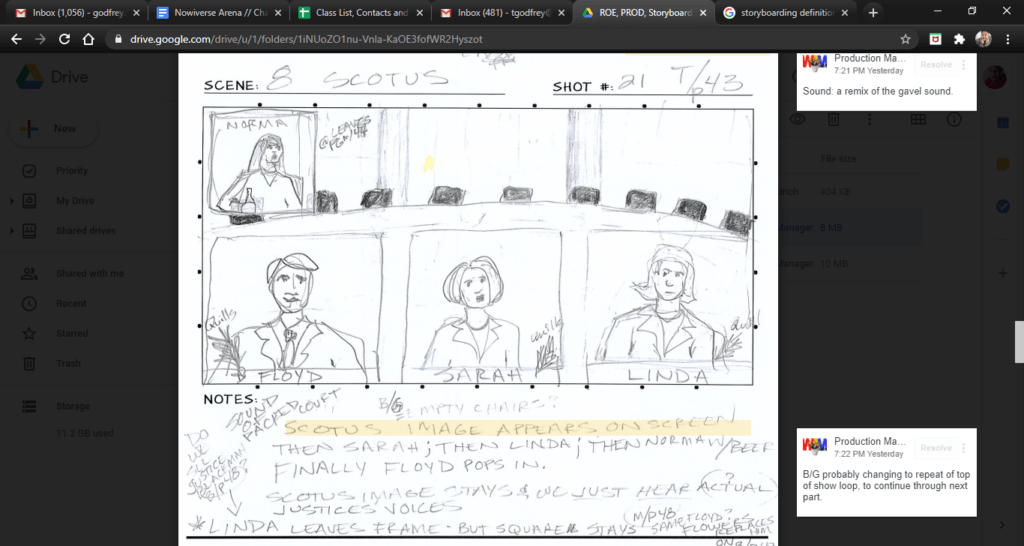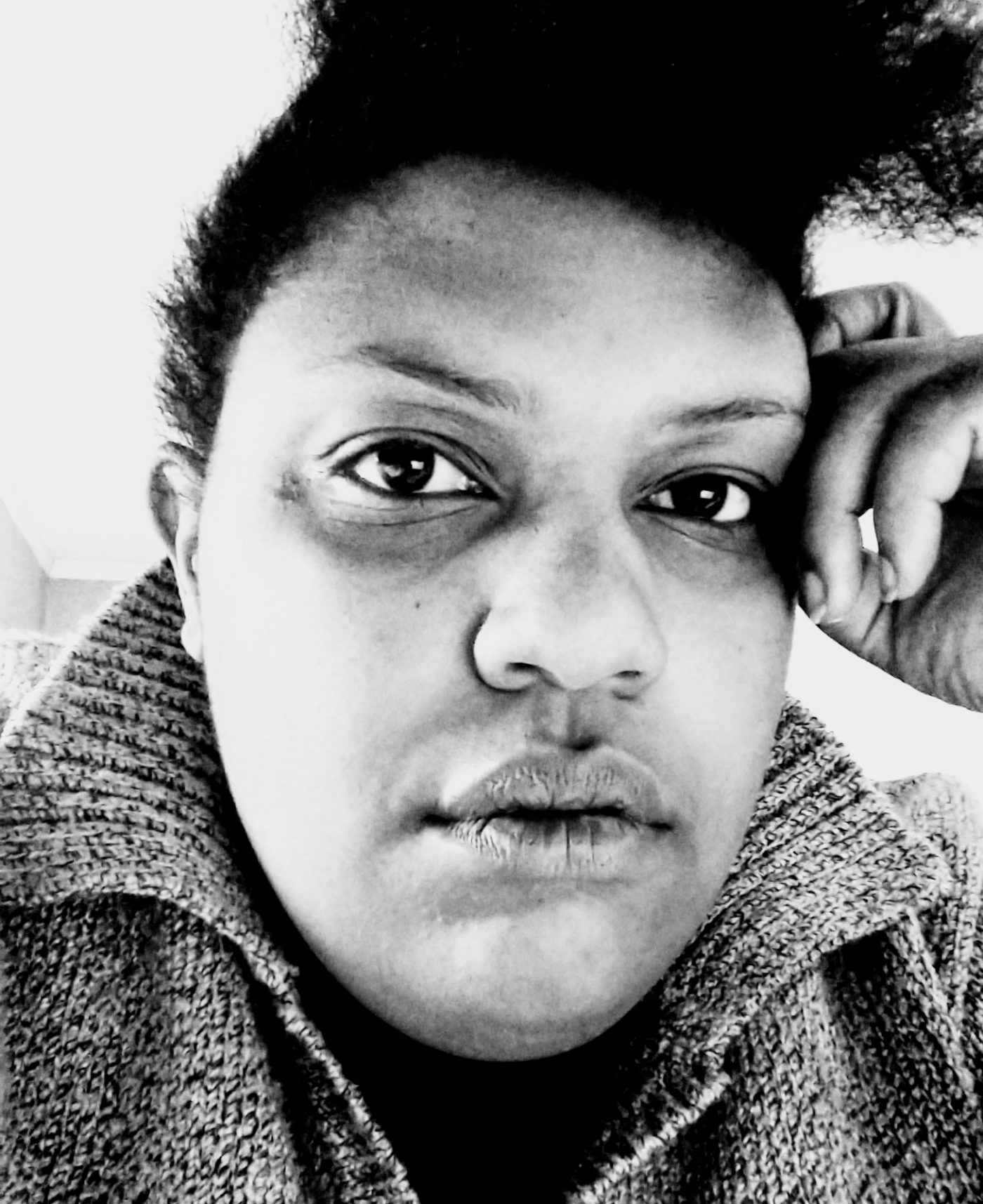My name is Tatiana Godfrey. I am a theater maker currently pursuing an MFA in dramaturgy at the University of Massachusetts. “What the heck is dramaturgy?!” you may be wondering aloud to your screen. What a great question! A primary function of the dramaturg is to ask questions and provide context for any given performance. This contextualization could be for the benefit of: a playwright working on a new play, an actor trying to understand their character and relationships, a director to use as a sounding board when casting and blocking a play, a production team in design choices, a marketing team in the poster image, an audience member participating in talk-backs or reading program notes or lobby displays, or any other creative stakeholder. Traditionally, this context comes in the form of research. However, there are as many functions for a dramaturg as there are practicing dramaturgs in the world.My brand of dramaturgy is informed by my background as a classically trained actor, improvisational comedian, educator, and black woman (learn more about me on my website). These intersecting identities provide me with a unique perspective to bring to performance. This summer and fall, I’m bringing this perspective to WAM’s production of ROE as the Assistant Dramaturg. I was brought on to this production in early 2020, before Coronavirus and George Floyd became household names. In the intervening months, the journey of this production of Roe has been transformative, reflecting the massive cultural and sociopolitical changes of the current moment: Roe is going virtual!
The dramaturgical questions I’m asking and the context I provide are now centering around one major question: what does it mean for ROE to be presented in a virtual space? Of specific interest to me in this journey to the virtual space is witnessing and working with the production team to essentially build a new system for theatrical creation. We, literally, have to work in new ways in order to tell this story. My improvisation background has been helpful in providing a structure for me to contribute to the work of this wonderfully creative and collaborative production team. One of the first rules of improvisation is “yes, and.” This means that whatever is offered in an improvised scene is now true and it’s my job to contribute positively to continue the story. Over the months of planning for ROE, many new “truths” were introduced to our production, from rehearsal and performance changes due to the necessities of social distancing to new opportunities for online design and audience engagement. For every development in the production process I’ve been able to assess by thinking “Here’s a new truth, how can I contribute positively?”
What elements from live performance in a theater can be translated into the virtual space? What can’t?
One element from live theater that has been difficult to reproduce is the “liveness” of the experience. The feeling of being in a darkened room with other people around you experiencing the same performance in the same place and at the same time is a unique sensation. Is it even translatable to a virtual environment? This discussion occupied a lot of space early in the production process. While the discussion at times bordered on the existential, we eventually decided that attending the theater is an “experience.” We, as the creative producers, could design an experience that mirrors the rituals of live theater and plays to the strengths of virtual performance.
An idea that I take from the world of education is “scaffolding.” “Scaffolding” refers to structuring lessons in a way that increases depth of knowledge and understanding. This idea was directly translated to the ROE experience in the creation of a dynamic website that mirrors the rituals of a live theater experience. With a ticket, audience members will be able to enter a virtual lobby where they can interact with other audience members, browse virtual lobby displays, learn about the content of the play, attend live ROE related events and talks with other audience members and, of course, enter the theater to watch the play. This structure of the experience takes the audience beyond learning facts about reproductive justice to engaging them in actionable steps to fight for reproductive rights.
What do production design elements look/sound/feel like in a virtual space?
Juliana von Haubrich, WAM Production Manager and ROE’s Scenic Designer, and ROE’s Costume Designer Deborah Brothers credit their time at CalArts as wonderful preparation for the challenge of designing in the virtual space. “All of the mediums live together for the artists at CalArts” Haubrich said of their training. This multi-media approach to creation has translated well to the virtual environment. Borrowing a method from film production, Haubrich, with input from Director Kristen Van Ginhoven and the production team, created a storyboard for the entire play.

A storyboard is a sequence of drawings that represent the planned film shots for a movie or television production. When I heard that the team planned to do a storyboard for the play, I was in wholehearted support. I recently worked on a visually driven play, The Water Station, in which the creative team storyboarded each scene. This method of communication about the story worked well and brought the designers in from the beginning of the process. For ROE, the storyboard allows all the members of the creative team to be (both literally and figuratively) on the same page about what each scene of the play will look and feel like. Each team member will have input in the storyboard and will help assemble tools for each actor to create the storyboarded scenes in their home.
With the storyboard just about complete, the final product is beginning to take shape, which is super exciting. Our editors at Outpost will use the storyboard to assemble the look of each scene and our web designers at T Square Design Studio will build the virtual theatre space. What once was a live theater production is now a dynamic digital production, and I think we’ve done a great job at maintaining the integrity of the play while (for the most part) gracefully transitioning to a virtual environment.

